Luca Frei: The Fifth Business
March 10 – May 12, 2012
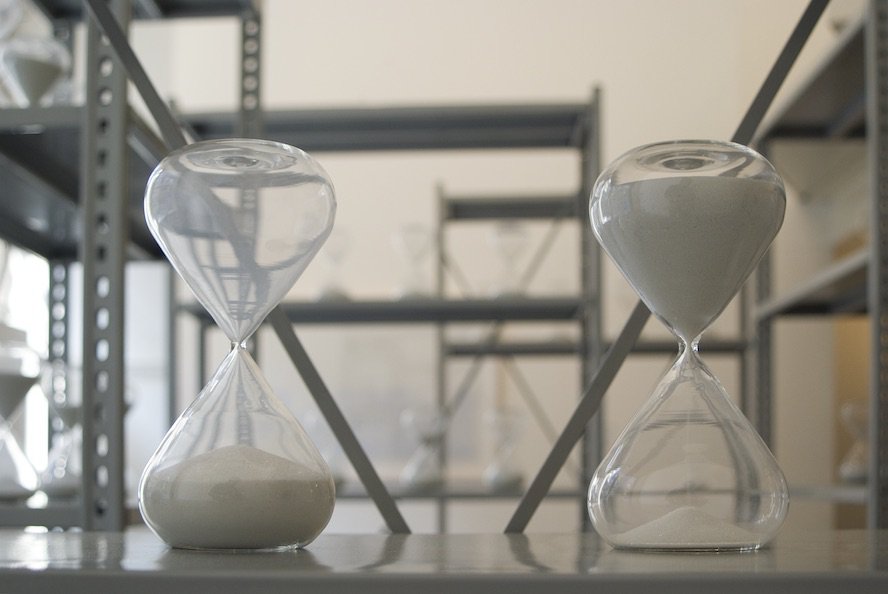
The expression Fifth Business refers to a specific kind of character in classical drama who is neither the hero, the confidant, the rival nor the villain. Although he plays only a supporting role, he brings a key element into the plot. This term taken from literary theory assumes a central role in Robertson Davies’ eponymous novel to which Luca Frei (*1976, Lugano) refers in the title of his show. The Swiss artist lives in Malmö. His works have been presented in numerous group exhibitions (Kunstsammlung NRW/Düsseldorf, Moderna Museet/Stockholm, MKHA/Antwerp or Kunsthalle Zurich, etc.). In his first solo presentation in Germany, Frei shows sculptures and installations that orchestrate the space architecturally and, among other things, brings a bronze pineapple and hourglasses together. An apparent heterogeneity marks the exhibition; however, the medium of the drawing forms a starting point for most works, whether sculptures or wall reliefs. An oversized ring hangs in the space and serves as a display system for photocopies of drawings, which the visitor can leaf through. In the room, freestanding metal structures are formally based on graffiti in which the letters resemble dancing figures. These linear sculptures, whose proportions recall silhouettes, merge into a multipart unit that unfolds between body and text. Frei uses the drawing as a notation system, but doesn’t show it as such in the exhibition. On a wall, a circular line has been drawn. A rope hangs from a nail at its center: traces of an action that lies in the past. Action scenarios and time experience are essential aspects of the exhibition. Each visitor can, for instance, activate one of the many hourglasses from the work The Sun 24 Hours (2011) and thus make the time spent in the exhibition visible to others. However, the handblown hourglasses show slight variations that preclude the possibility of an exact measurement of time. The installation depicts the existence of multiple times that often diverge and sometimes contradict each other. The hourglasses’ original packing material is made up of pages from the financial newspaper Il Sole 24 Ore and gives the work its title. It is related to another newspaper that came about within the framework of the exhibition and is made available for visitors to read in the show. The exhibition creates a stage for a potential action, by which fixed structures and the uncanny can meet up. An oversized apron suggests the existence of giants, while the drawing on its front shows a creature in a skyscraper costume assaulted by crocodiles-dogs. This surreal object seems both accurate and erratic, as do other works in the hall. The visual level of this exhibition plays out between joyful naivety and subtle materiality. The social themes that are found in Frei’s work—identity, the measurement of time, control of the body, peer pressure—are addressed repeatedly in a seemingly harmless, clueless way that, not least of all, is also innate to self-irony.
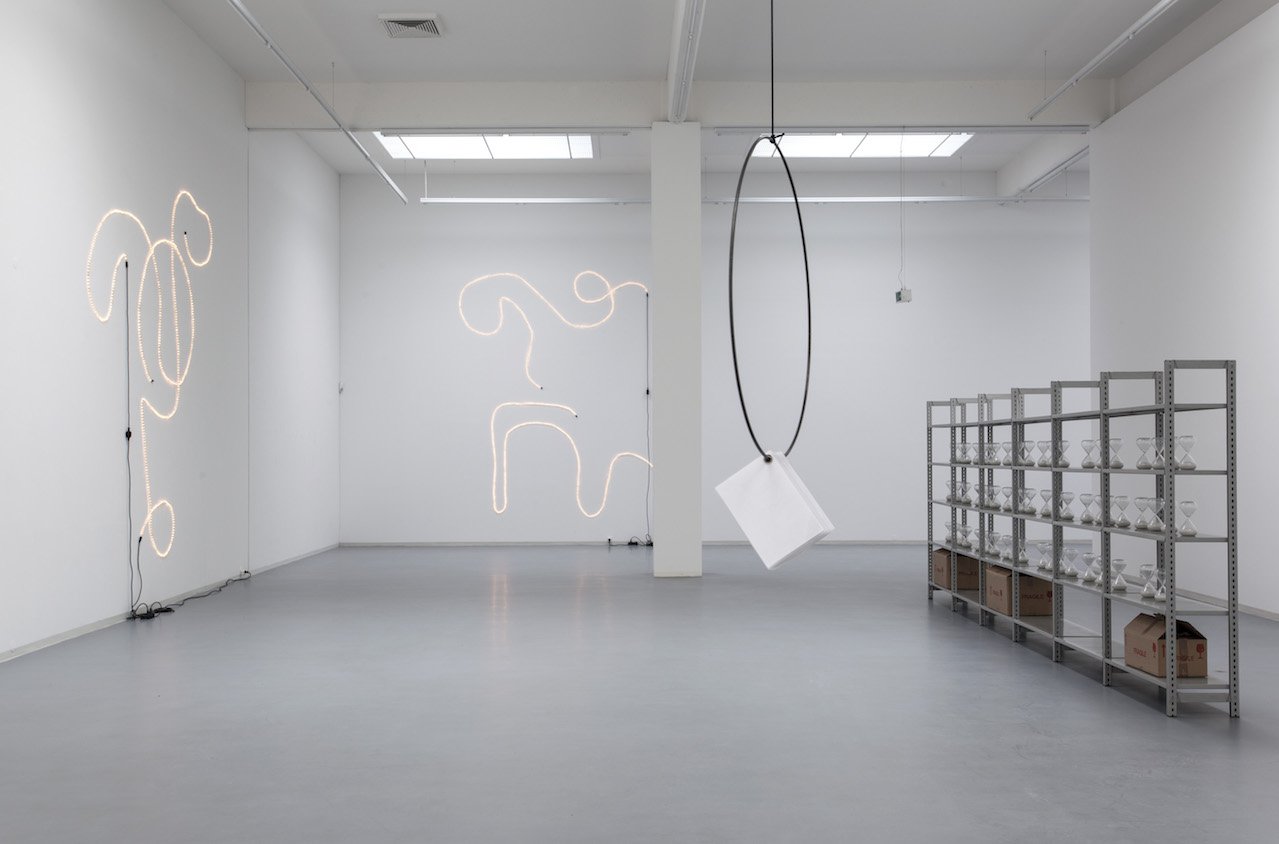
Luca Frei, The Fifth Business, installation view, Bonner Kunstverein, 2012. Photo: Simon Vogel
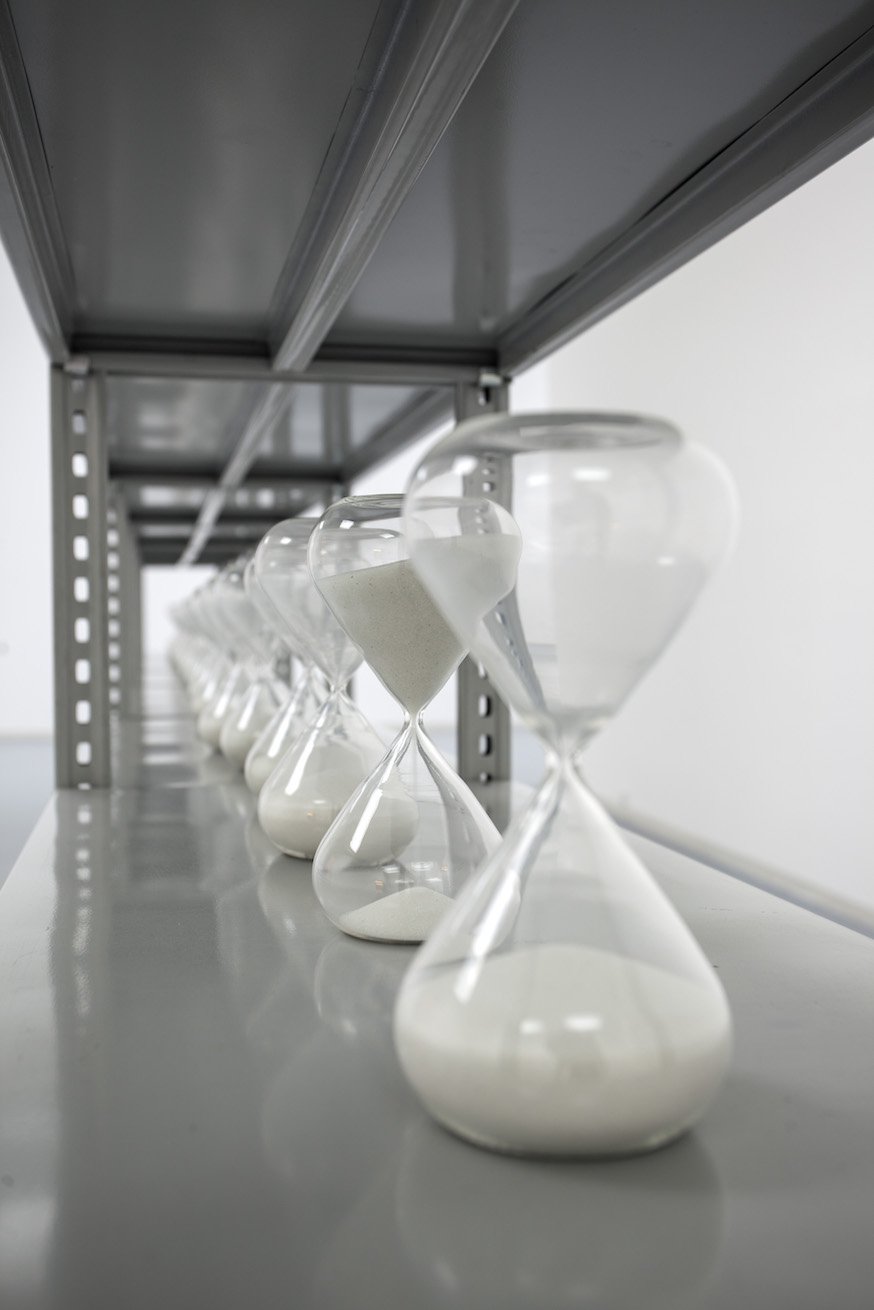
Luca Frei, The Fifth Business, installation view, Bonner Kunstverein, 2012. Photo: Simon Vogel
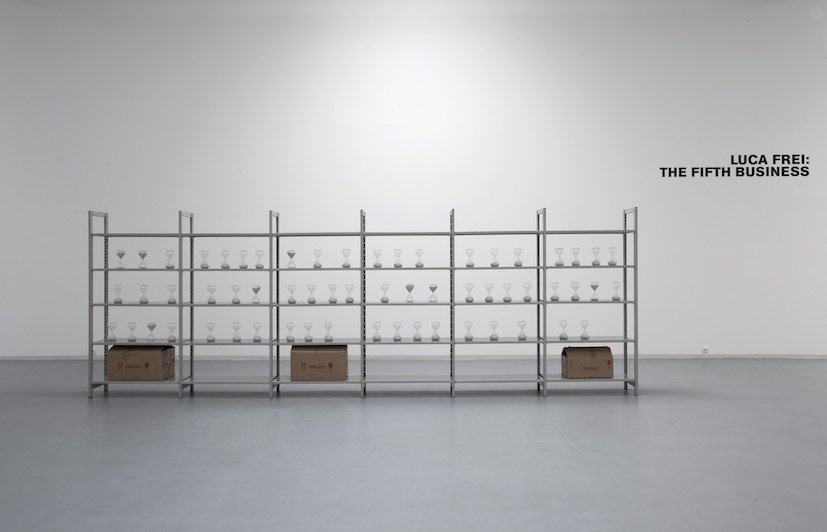
Luca Frei, The Fifth Business, installation view, Bonner Kunstverein, 2012. Photo: Simon Vogel
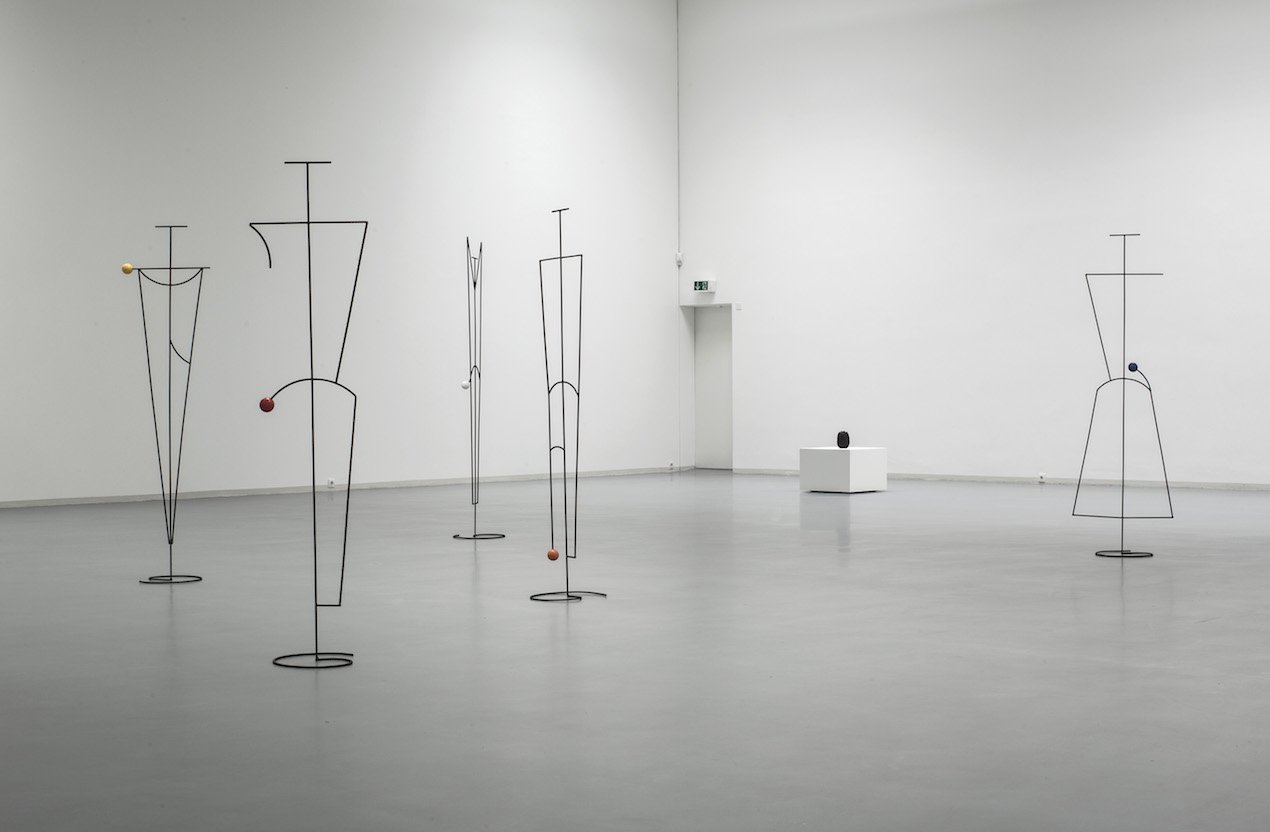
Luca Frei, The Fifth Business, installation view, Bonner Kunstverein, 2012. Photo: Simon Vogel
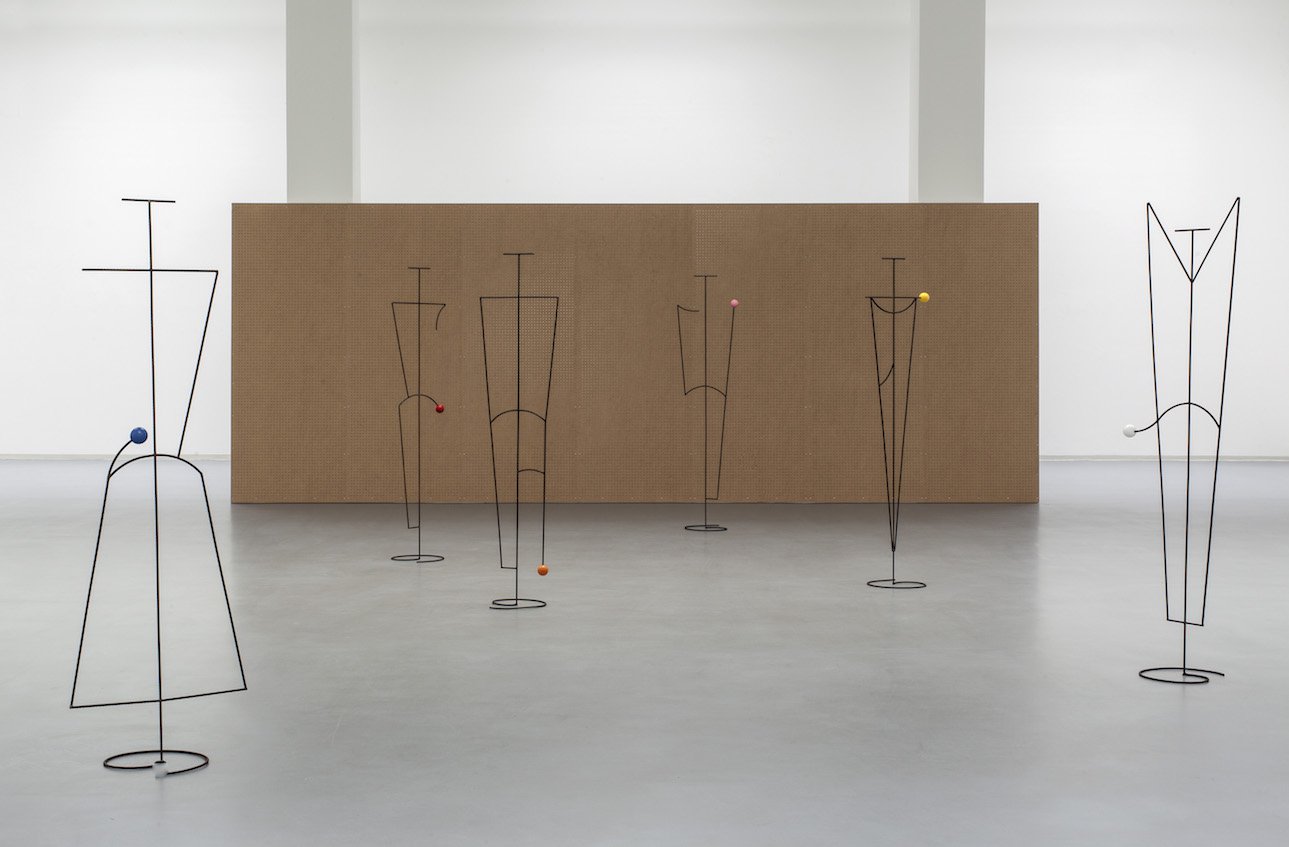
Luca Frei, The Fifth Business, installation view, Bonner Kunstverein, 2012. Photo: Simon Vogel
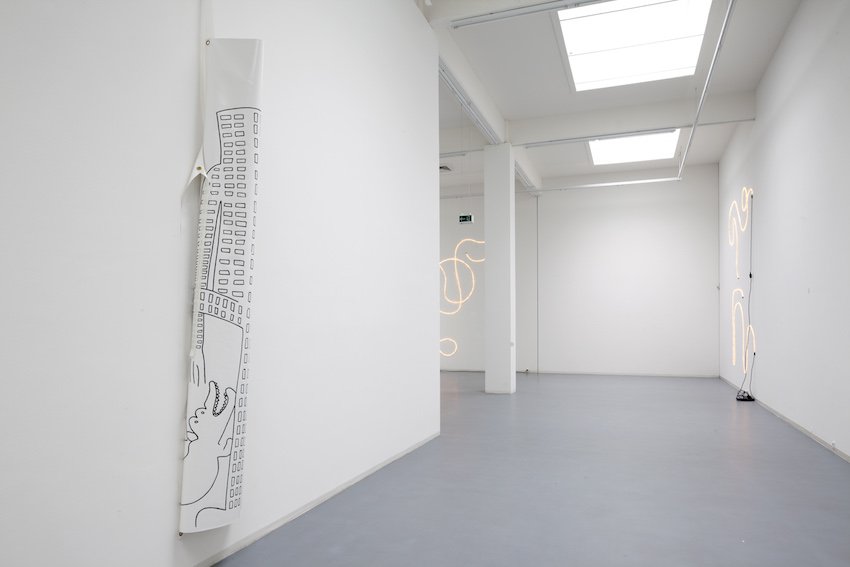
Luca Frei, The Fifth Business, installation view, Bonner Kunstverein, 2012. Photo: Simon Vogel
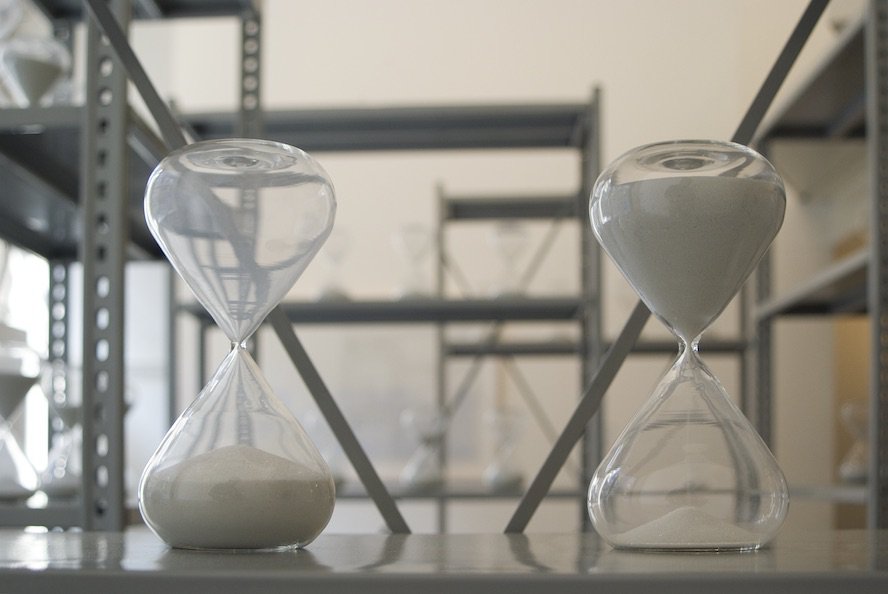
Luca Frei, The Sun Twenty Four Hours, 2011. Installation view: Studio Dabbeni, Lugano. Courtesy the artist and Studio Dabbeni, Lugano.
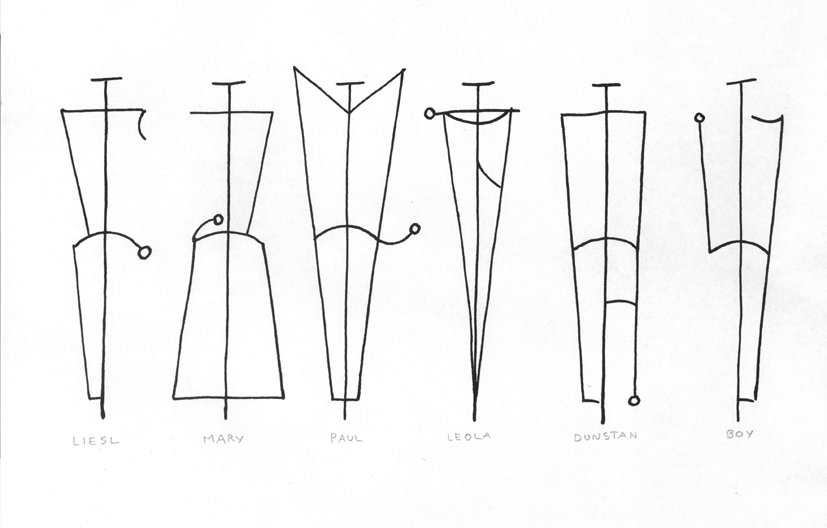
Luca Frei, Sketch for Family, 2012. Courtesy the artist.